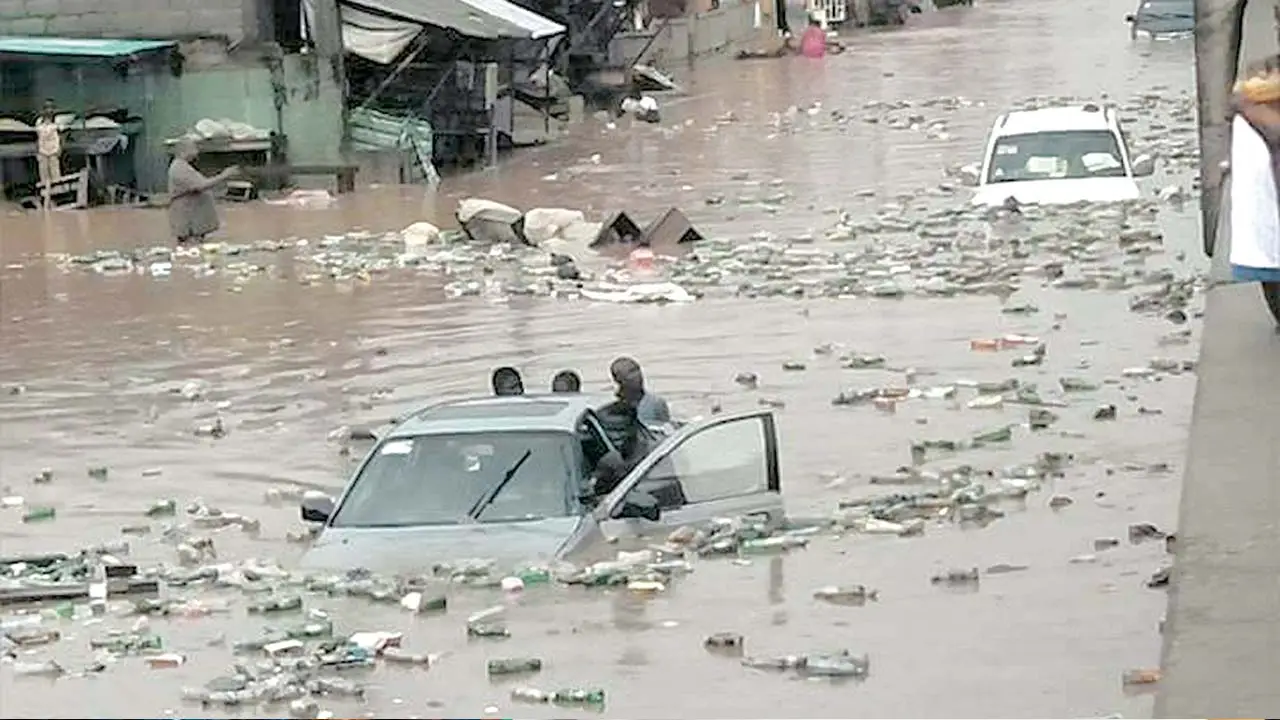
Flood Crisis: 21 LGAs in 10 States and FCT Affected, Says FG
Federal Government announced yesterday that flooding has submerged 21 local government areas in 10 states and the Federal Capital Territory (FCT) due to recent heavy rains.
Water Resources Minister Joseph Utsev, alongside Minister of State Bello Goronyo and NIHSA Director General, reported at a briefing in Abuja that several states have faced flooding since April 2024. The flooding, primarily caused by prolonged intense rainfall and poor drainage systems, has affected numerous areas, displacing residents and causing property damage.
In April 2024, the Annual Flood Outlook by the Nigeria Hydrological Services Agency (NIHSA) predicted that 148 LGAs in 31 states are at high flood risk, 249 LGAs are at moderate risk, and 377 LGAs are at low risk. The high-risk states include Adamawa, Akwa-Ibom, Anambra, Bauchi, Bayelsa, Benue, Borno, Cross-River, Delta, Ebonyi, Edo, Gombe, Imo, Jigawa, Kaduna, Kano, Kebbi, Kogi, Kwara, Lagos, Nasarawa, Niger, Ogun, Ondo, Osun, Oyo, Rivers, Sokoto, Taraba, Yobe, Zamfara, and the FCT.
Utsev highlighted that the floods have already impacted more than 10 states, with several casualties and property losses. Recent floods in the FCT, for example, submerged the Trade More Estate in Lugbe, resulting in two deaths. Other affected areas include AMAC, Kuje, Gwagwalada, Bwari, and Kwali LGAs, among others in states like Anambra, Edo, Benue, Kwara, Lagos, Ogun, Osun, Nasarawa, Taraba, and Yobe.
As rainfall increases, especially in southern Nigeria, the flood risk will also rise, exacerbating the ongoing cholera outbreak. According to the National Centre for Disease Control (NCDC), the outbreak has resulted in 63 deaths and 2,102 suspected cases as of July 3, 2024. Utsev emphasized that most flood incidents result from flash/urban floods due to heavy rainfall and blocked drainage systems.
Currently, major dams like Kainji, Jebba, and Shiroro are still impounding water, with no releases reported yet. However, the minister noted that river flooding is expected to begin in July 2024, affecting 19 states including Akwa Ibom, Anambra, Adamawa, Benue, Bayelsa, Cross River, Delta, Edo, Jigawa, Kogi, Kebbi, Kaduna, Niger, Nasarawa, Ondo, Ogun, Rivers, Taraba, and the FCT.
Utsev also mentioned Nigeria’s position within the River Niger Basin, which includes nine member countries, making Nigeria susceptible to flooding when upstream areas flood. The hydrological year 2024/2025 has begun, with water levels rising but still within acceptable limits. The situation at monitoring stations like Jiderebode and Lokoja is normal, with no immediate concerns.
The government is monitoring the Lagdo Dam in Cameroon, which is filling for hydropower generation, but no cause for alarm is reported regarding water releases on the Benue River basin. States and local governments are urged to take proactive measures to mitigate flooding impacts, such as educating citizens, clearing blocked drainage systems, relocating people from flood-prone areas, and constructing flood barriers.
Meanwhile, the National Emergency Management Agency (NEMA) has identified 11 LGAs in Anambra State at high and moderate flood risk, calling for collaborative efforts to mitigate flood impacts. NEMA Director General Zubaida Umar emphasized the importance of community participation and proactive measures to prevent flood-related disasters.
Anambra State Governor Charles Soludo, represented by Deputy Governor Dr. Gilbert Onyekachi Ibezim, commended NEMA’s initiative and called for more dam construction to reduce flood occurrences. NEMA’s Director of Disaster Risk Reduction, Dr. Daniel Obot, presented on flood prediction and disaster risk reduction strategies at a workshop in Awka, Anambra State.